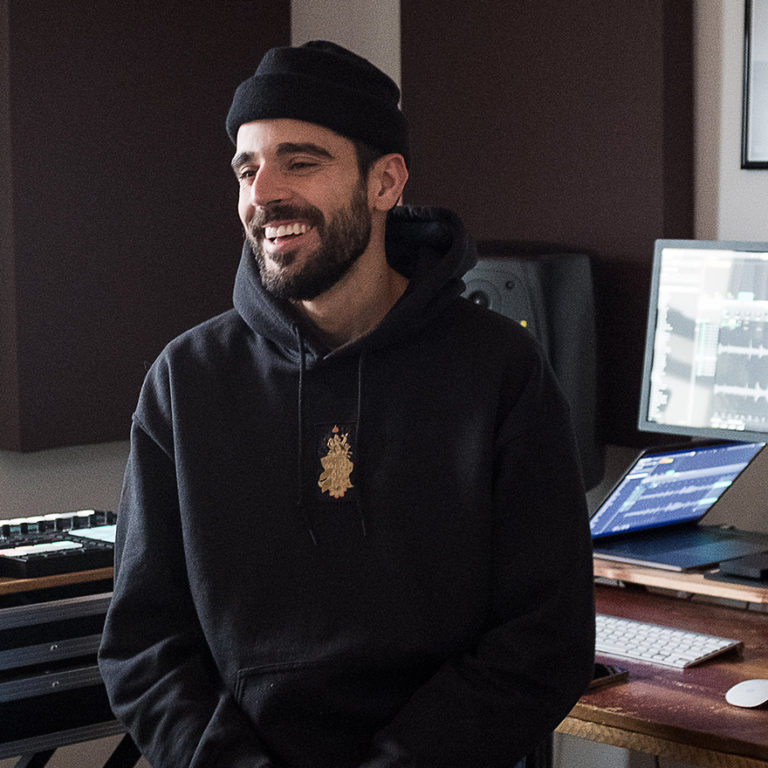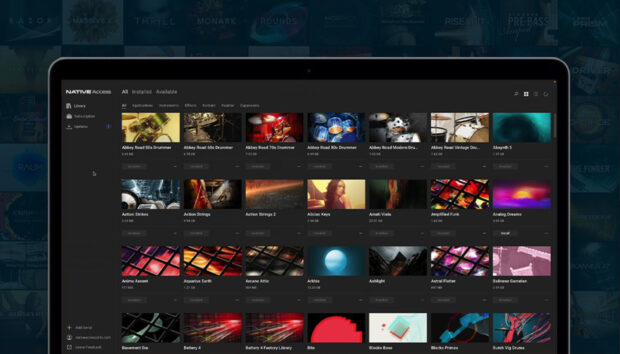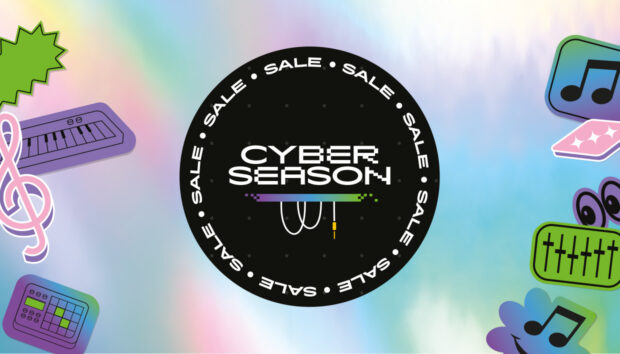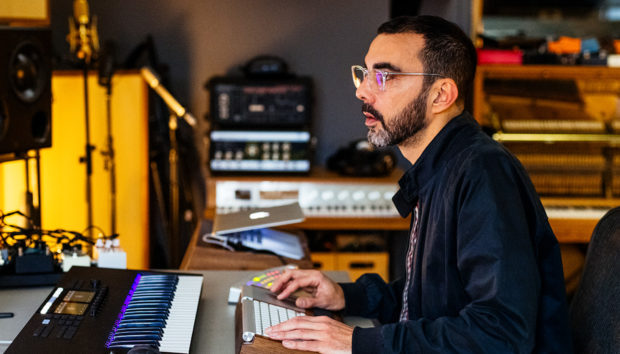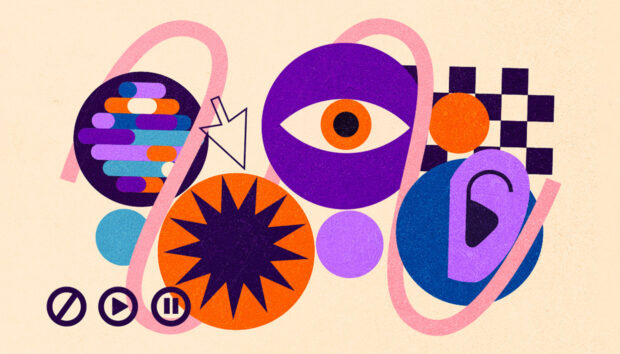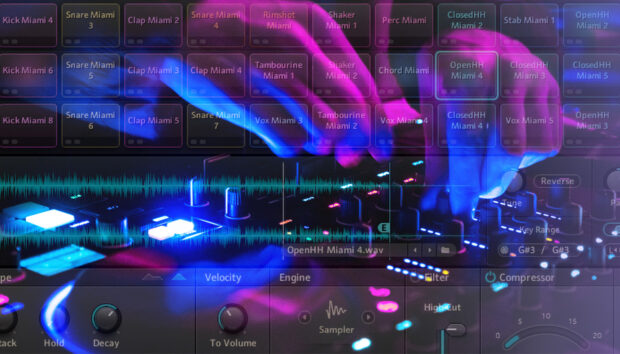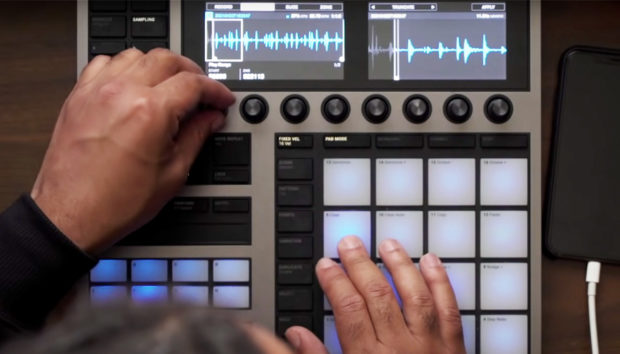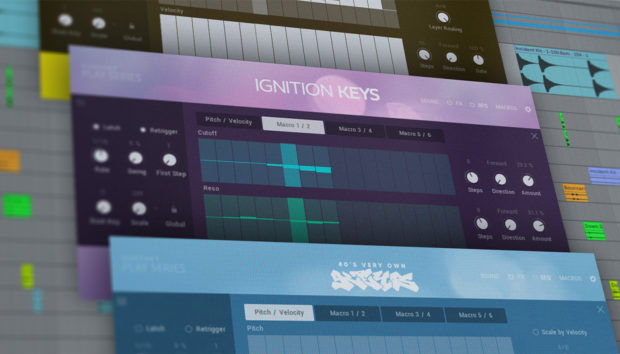Soul Brother Stef, real name Stef Cvetkovic, is a Canadian beatmaker we first discovered on Twitter. You might have seen him on our Instagram since. Using MASCHINE as the main tool for his J Dilla inspired beats, Stef performs live, releases mixtapes, and, most prominently, uploads daily performance videos. Speaking to Native Instruments, Stef sheds light on how to grow as an artist and videomaker, with his #30DayBeatChallenge at the center of it all.
How did you get started beatmaking?
Drums were my first instrument, and my first real love. I played in a lot of bands—folk, pop, rock, soul, R&B—and making beats was always a bedroom hobby. When my last band was hitting rough water, I thought, “Oh, this is an interesting time for the transition to happen.” Now beats have become the main focus. I still play drums everyday and use a lot of real instruments in my beats, but the transition has been a funny one over the last 10 years.
Was it easy to switch between live drumming and finger drumming?
I learned to finger drum because I lived in an apartment and couldn’t bring my kit in there. So I started to really try and figure out how to imitate real drums. If we wanted to still make records, we could do it without renting a space, and just kind of mess around like that. When I first picked up the MASCHINE it was a smooth transition. It was like getting my first MIDI controller, but a million times better. I went cray on it!
Besides the beats, your videos also stood though your soulful singing.
It’s funny; I always sing backup vocals in bands, but I never saw myself as the lead vocalist. I was the drummer. It was always this nice shield I had. It didn’t matter if I said anything, no one would understand it anyway. The drummer’s mic is always the lowest, you know what I mean? So it’s taking a little bit of time to actually sing on records now.
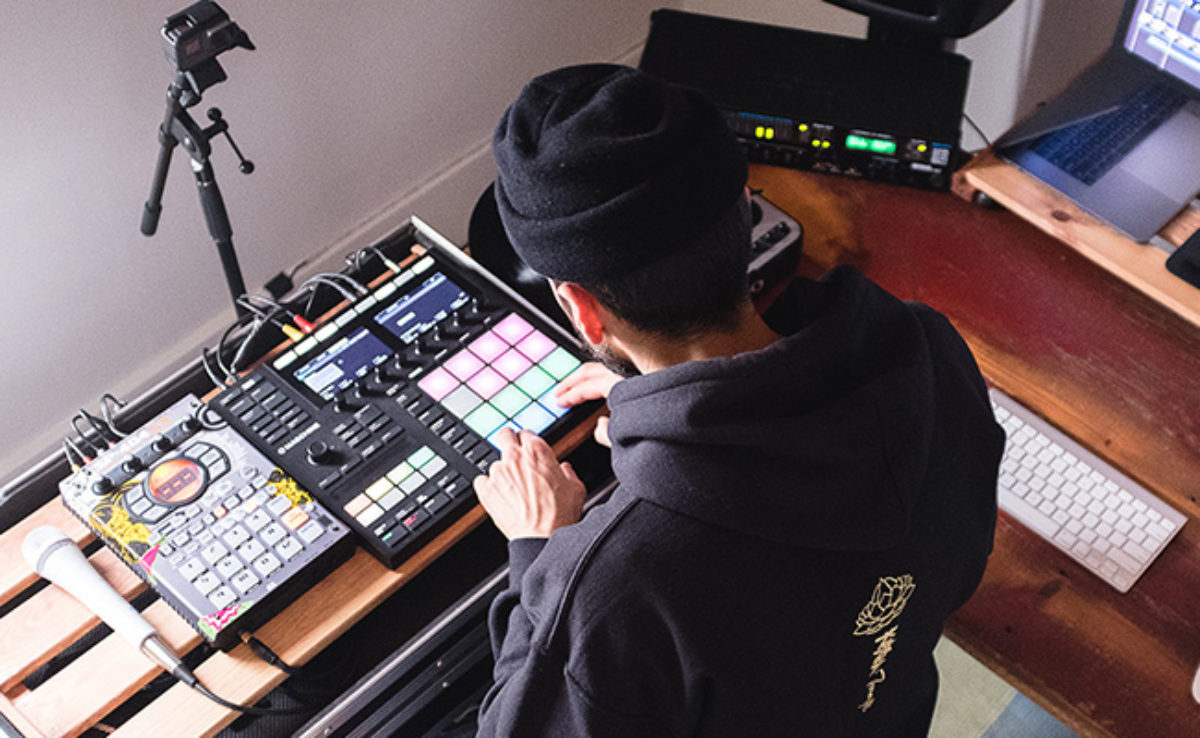
But your singing voice is so smooth. Are you getting used to it by making videos?
Yeah—the videos, the shows. We live in a time of validation. If you get people commenting on your stuff like, “Damn, this is dope!” It might actually be… Dope? OK! I hate that about the age we live in, but I also love it. It gives you this opportunity to refine what you do before you really go put it out there. I started live streaming almost everything. If I’m going to work on a beat, I throw up my phone and live stream it on Instagram. It’s so interesting to hear people chime in on the creative process. Maybe I’ll throw in a vocal, and someone will say, “That was a dope line!” There’s a chance I wouldn’t have thought that by myself. So, it’s definitely giving me a boost of confidence to put more vocals on tracks and write more that way.
You’ve been filming videos for a few years. How’d you get started?
At first I started shooting videos in different locations and trying really crazy things. Then I see that guy junk-E-cat, and holy shit! That guy’s sitting on the edge of a building! But honestly, it appealed to me because of how easy it was to shoot the videos. Every band I’ve been in, we were always about shooting videos and filming live takes. It was even simpler with my MASCHINE. I just hit record on my GoPro.
But of course, there were points where I would dread making a video. Sometimes it takes, like, eight-hours. It might only be a two-minute video and it’s one shot, but you might not get that take for 100 takes. Lately I’ve been posting so many. I did that #30DayBeatChallenge. Once I got to 30 days, I thought, “I’m just going to keep going now.” If I can reach 60 days, maybe I can make a year. I had no rhyme or reason to why I did it. I love shooting videos now.
Tell me about the #30DayBeatChallenge. Is it a social media trend?
There’s a handful of producers doing it in the beatmaking community. It’s a cool challenge because you don’t win anything at the end; we’re not competing for a golden ticket. I saw it as an opportunity to connect with other producers who were doing the same challenge, and just to challenge myself in that way. The last few months have been so busy. This challenge has taught me that it doesn’t matter what time it is — I know that I’m going to get a track in every single day. It was a big time lesson. I will say, though, ten days in and I was like, “Fuck this, I’m over it!” [Laughs] But now I’m at day 34.
When Native Instruments re-posted one of your videos, I saw that Seal commented on it.
You should have seen how many people sent me that screenshot: all my homies, my lady, her friends. They were like, “Holy fuck, Seal!” I call it the “seal of approval.” [Laughs] I can’t tell you how much joy that brought me. It was puke-worthy.
I also had a repost from Pete Rock. Mecca and the Soul Brother, that was one of the greatest hip hop records in the 90s. Sometimes I’ll tag someone in my video when I post it, just because you never know. But the one time I tagged Pete Rock, a minute later he reposted my video on Twitter and Instagram. And that for me was another moment of: OK, keep doing this.
When you make your videos, what’s the setup?
The setup is hilarious. I use a work clamp to hold the GoPro to a cymbal stand. And then I have these random work lights. It’s the least professional looking setup, but it’s so simple. 99% of the videos I shot by myself. I love the fact that I can connect my GoPro wirelessly to my phone. I can sit there and position myself and make sure the GoPro is centered. And then it’s really just a matter of if the lighting’s right. There was one video where I tried using two different cameras, which drove me crazy. Although that was the one Pete Rock reposted, where I’m playing drums and singing.
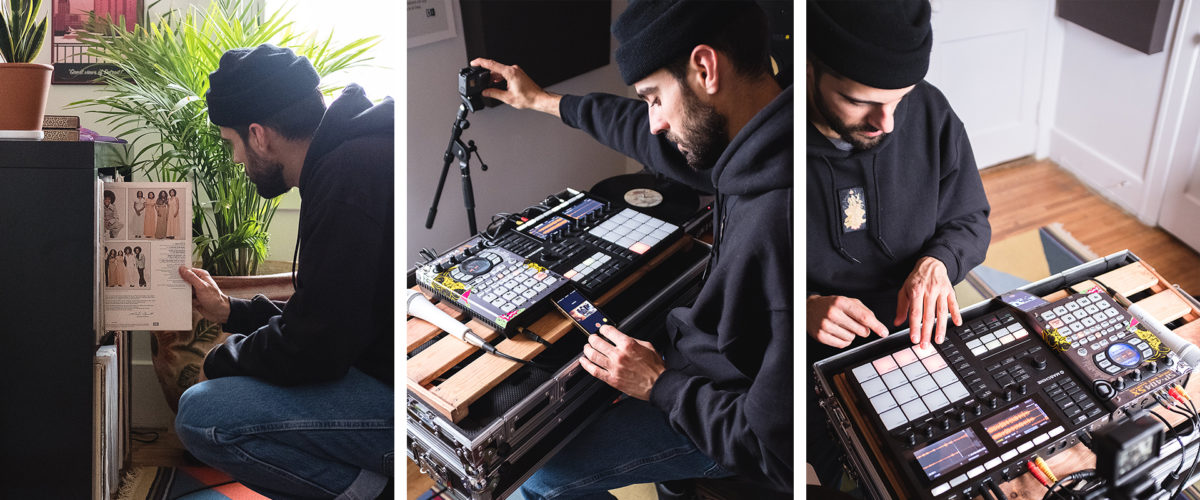
Could you explain how you recorded that video?
That setup was the most intense. It had the dSLR camera, the GoPro, eight channels running into ProTools, recording it on ProTools, mastering it there, bringing it back to my laptop to edit on FinalCut. It was just so… Overwhelming.
I always try and treat my MASCHINE as an instrument, as opposed to a controller. It’s so live and organic. So, with that setup, it’s really just that. I treat the MASCHINE as an instrument, and I line it out right into my ProTools rig. Same thing with the drums. The reason it drove me crazy was because the drum setup was in one space, and my actual control space was in the room over. So I would run through a take and then get up—hit stop on the one camera, hit stop on the other camera, hit stop on the computer. And then I would see 10 things distorting or clipping, so I’d have to get a general mix as I was going. These were all live; I don’t cut any part of it to work or edit it. It’s the take. That track was two and a half minutes long, and I would get to two minutes and 20 seconds and fuck up. And it would be like, Oh… My… God… I have so many clips of me screaming after a take. [Laughs] Some are funny, but some, I’m just talking to myself. I’ll listen back to the recording and think: “Dude, you’re crazy!”
That was one of those eight- hour days.
At least. I don’t remember how long. That was like a blackout moment.
How about this collaborative video: “Lost In the Motion” featuring Munch, Broccoli, and Nuntheless.
I did this one recently as part of my 30DayBeatChallenge with a few guys from Detroit I often work with. It was a six-hour session. Munch showed up, as I was working on a beat. Then Nuntheless and Broccoli came, and we were like: “Let’s just try something new.” Nuntheless plays amazing keys, which he plugged into the MASCHINE, and I sampled. That’s the first time I really used someone else playing into MASCHINE. It was such an interesting way to do it.
I learned something a few years ago, when my older band was recording in New York with this dope producer. He always had interesting ways of looking at sessions and recording, and always had people in the room. Every time we recorded, there were, like, eight people in the space. The one thing they teach at audio engineering school is: if you don’t need to be in the space, don’t be in there. This producer didn’t care so much about having zero noise. We were there to catch a vibe. I think that’s the most important thing for the creative process. Like, when Nuntheless, Munch, Broccoli, and are I are together, you know… Nuntheless is playing a key part, and Munch is like, “Damn that’s dope!” So I sample that. And then we chop that, and work in those directions where people feel that vibe. It was a six or seven hour session in total of writing and everything.
If someone asks how do they get their videos on Native Instruments, what would you tell them?
Just put in the work. I’m all about content. Especially past this #30DayBeatChallenge, I want to be on it every single day. The most opportunities I’ve had have happened in the last 30 days to six months—but heavily in the last 30 days. It’s interesting that it’s all happening just through being active. Just staying active on that platform. I think to any aspiring producer, videomaker, whatever—just actually do the work and put it out. That’s all it is.
Also in your case: talent.
Ha! I appreciate it, thank you.
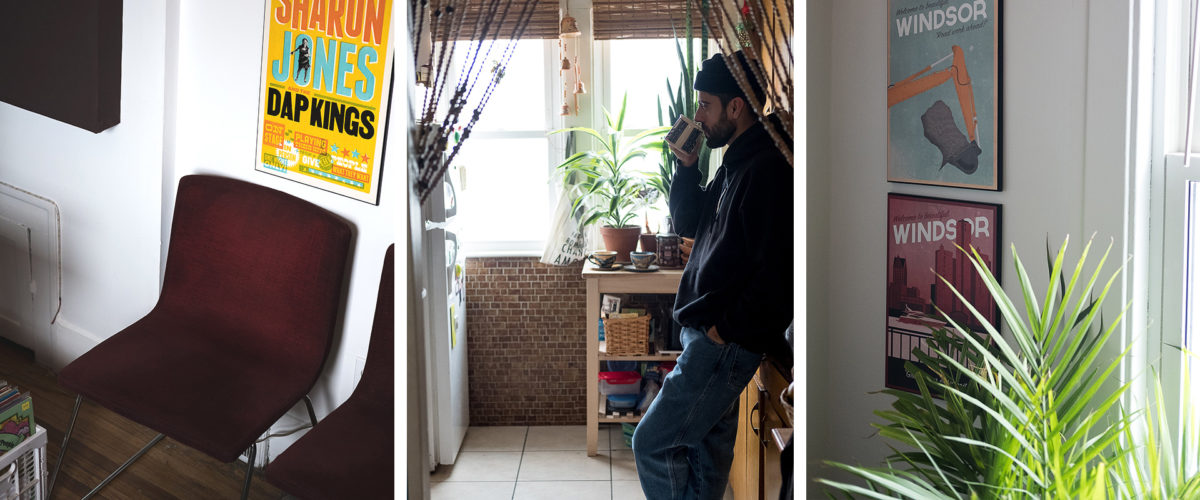
photo credits: Ryan J. Frith








